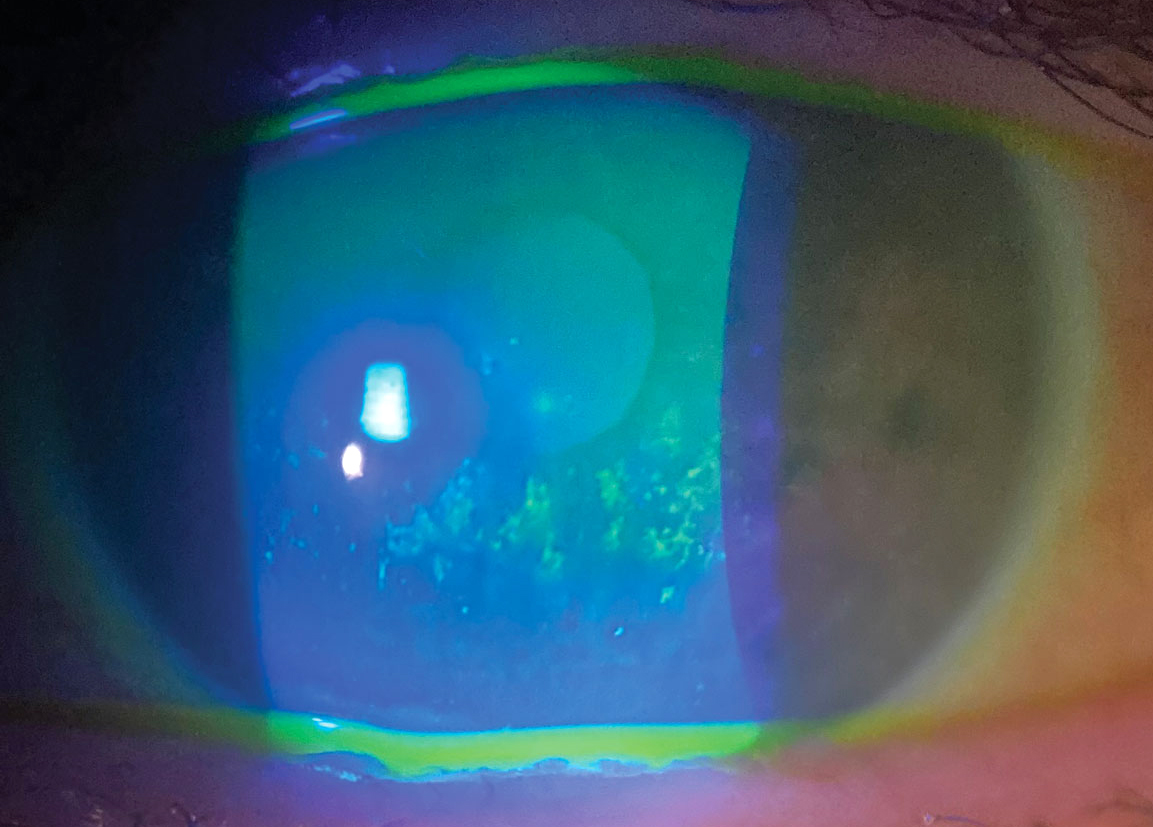 |
| After nine to 11 days of IVF treatment, this study found that women had increased ocular pain and dry eye symptoms, decreased tear break-up and reduced tear secretion. Photo: Pam Theriot, OD. Click image to enlarge. |
It’s well known that changes in hormones levels influence dry eye manifestations, particularly in women. Prior studies show that estrogen supplementation in post-menopausal women may cause ocular effects such as increased dry eye symptoms, for instance. Given that in vitro fertilization (IVF) elevates circulating estrogen levels by 10 to 50 times, a team of Australian researchers decided to evaluate the tear film and ocular surface of a group of women undergoing the procedure. They found that during treatment, the women showed small increases in symptoms of ocular dryness, ocular pain and tear film alterations analogous to mild dry eye that were associated with an extreme rise in serum estradiol levels and a reduction in luteinizing hormone (LH).
The study included 40 women (average age: 36 years) being treated with IVF who each attended two clinical visits: the baseline visit, on the first day of menstruation when estrogen levels are lowest, and the peak estrogen visit, occurring between days nine and 11. Eight percent of the cohort had previously been diagnosed with dry eye. Using various dry eye and ocular surface surveys, including the Ocular Surface Disease Index (OSDI) questionnaire, the researchers evaluated patients’ ocular signs and symptoms at each visit, as well as assessed their serum hormone levels.
At baseline, the average estradiol level was 28.9pg/mL, which increased to 1,360pg/mL by the peak estrogen visit. At the second visit, ocular pain and dry eye symptoms worsened, tear stability decreased by an average of 1.25 seconds and tear secretion values reduced by an average of 1.55mm. The researchers associated symptom worsening with higher levels of estradiol and lower levels of LH, and dry eye symptoms were independently predicted by LH level and tear break-up. Additionally, increased ocular pain was associated with a reduction in LH and an increase in progesterone.
Despite these observations, the researchers noted that most of the ocular surface changes between visits were not clinically significant. “Although more women were categorized as having dry eye (defined as OSDI >12) at the peak estrogen visit compared to the baseline visit, there was no significant change in the distribution of dry eye categories and difference in OSDI scores between visits,” they explained in their paper, published in The Ocular Surface. The researchers also saw no significant changes between visits in MGD-related symptoms or instantaneous dry eye symptoms based on scores of the Instant Ocular Symptoms Survey (IOSS) and the Meibomian Gland Dysfunction-Specific Symptom Questionnaire (MGD-14). However, they did find that a “significantly higher proportion of women reported frequency and severity of symptoms (SANDE) to be increased at the peak estrogen visit compared to the baseline visit.”
Based on these results and those of previous studies, the researchers suggest the importance of clinicians recognizing that “some women may experience increased symptoms and signs of dry eye during IVF treatment, and women with greater changes in serum levels of sex hormones during IVF treatment may expect to experience greater changes in symptoms of dry eye and ocular pain.” This research may help guide the counseling and ophthalmic management of women undergoing IVF.
Boga A, Stapleton F, Chapman M, Golebiowski B. Effects of elevated serum estrogen on dry eye in women undergoing in vitro fertilisation. Ocular Surface. July 6, 2023. [Epub ahead of print]. |

